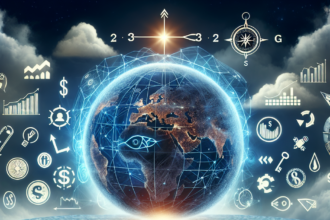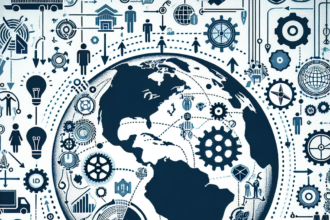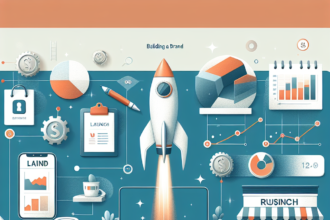The Global Supply Chain Revolution: What 2025 Holds for Businesses
The global supply chain landscape is undergoing a seismic shift, primarily driven by technological advancements, changing consumer preferences, and the need for resilience against disruptions. As we approach 2025, companies must adapt to this evolving environment or risk obsolescence. In this article, we will explore the key trends and predictions for the global supply chain in the coming years and the implications for businesses worldwide.
The Rise of Digital Supply Chains
One of the most significant transformations in supply chain management is the digitalization of operations. Technologies such as artificial intelligence (AI), the Internet of Things (IoT), blockchain, and big data analytics are becoming integral to supply chain strategies. By 2025, we can expect that many businesses will fully leverage these technologies to enhance visibility, optimize inventory, and streamline logistics.
For instance, IoT devices can track shipments in real-time, allowing businesses to anticipate potential delays and respond proactively. AI-driven analytics will enable firms to predict demand with greater accuracy, mitigating the risk of overstocking or stockouts. Furthermore, blockchain technology will ensure transparency and traceability, thereby bolstering consumer trust and compliance with regulations.
Increased Focus on Sustainability
Sustainability has emerged as a key factor in supply chain management. The global push towards greener practices means that businesses must prioritize sustainable sourcing, minimize waste, and optimize transportation routes to reduce carbon footprints. By 2025, sustainable supply chains will likely become a primary competitive differentiator. Companies that fail to adopt green practices may face backlash from environmentally conscious consumers and tighter regulations.
Organizations are already embracing initiatives such as circular supply chains, where materials are reused, refurbished, or recycled rather than disposed of. Ensuring an eco-friendly supply chain not only meets consumer expectations but also drives efficiency and cost savings in the long run.
Resilience Against Disruptions
The COVID-19 pandemic exposed vulnerabilities within global supply chains, prompting businesses to rethink their strategies. By 2025, resilience will become paramount. Companies are likely to prioritize diversification of suppliers and local sourcing to mitigate risks associated with geopolitical tensions, natural disasters, and global pandemics.
Cultivating relationships with multiple suppliers provides a safety net and reduces reliance on any single source. Additionally, companies may explore nearshoring strategies, bringing manufacturing closer to end markets to enhance flexibility and responsiveness.
Automation and Robotics
Automation will continue to revolutionize supply chain operations. By 2025, robotics and automation technologies will be commonplace in warehouses and distribution centers. Automated guided vehicles, drones, and robotic arms will enhance efficiency, reduce labor costs, and minimize human error in order fulfillment processes.
Moreover, advanced technologies such as Autonomous Mobile Robots (AMRs) will streamline logistics operations, allowing businesses to operate around the clock without an increase in labor costs. This transformation will lead to faster delivery times and improved service levels, catering to consumer demands for instant gratification.
Challenges Ahead
Despite the opportunities presented by this revolution, businesses must also navigate challenges. The ongoing skills gap in the workforce, cybersecurity threats, and the complexities of managing multichannel supply chains will require strategic thinking and investment. Companies will need to upskill their workforce to utilize new technologies effectively while also safeguarding their operations against potential cyberattacks.
Conclusion
The global supply chain revolution is paving the way for an era marked by innovation, sustainability, and resilience. As we look ahead to 2025, businesses must stay ahead of these trends to maintain competitive advantage. Embracing digital technologies, prioritizing sustainability, diversifying suppliers, and leveraging automation will be essential strategies for navigating the complexities of the future supply chain landscape.
FAQs
Q1: What is the role of technology in the future of supply chains?
A: Technology plays a pivotal role in enhancing visibility, optimizing inventory, and streamlining logistics. Innovations such as AI, IoT, and blockchain will enable real-time tracking, predictive analytics, and greater transparency in operations.
Q2: How important is sustainability in supply chain management?
A: Sustainability is becoming a critical factor for consumers and regulators alike. Companies that prioritize eco-friendly practices in their supply chains are likely to gain a competitive edge and build stronger brand loyalty.
Q3: Why is resilience crucial for supply chains in 2025?
A: The COVID-19 pandemic highlighted the vulnerabilities in global supply chains. Building resilience through supplier diversification and local sourcing helps businesses mitigate risks posed by external disruptions.
Q4: How will automation influence supply chains by 2025?
A: Automation will increase efficiency and reduce costs in supply chain operations. Robots and automated systems will enhance order fulfillment, allowing companies to deliver faster and more accurately.
Q5: What challenges might businesses face in the evolving supply chain landscape?
A: Businesses may contend with a skills gap in the workforce, cybersecurity threats, and the complexities of managing diverse supply chains. Strategic planning and investment will be essential to overcome these challenges.











